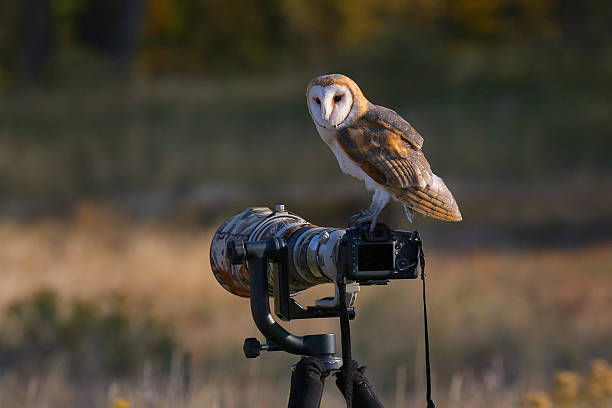Full house at Malanda Hotel for bird presentation by Scott Ritchie
- Peter Valentine

- Nov 25
- 4 min read
Peter Valentine | Tablelands Area Coordinator and Conservation Officer

Despite clashing with the Opening Night of The Full Monty play at the Malanda Theatre, Scott Ritchie drew a big crowd to his wonderful presentation on bird stories through photographs. Visitors for the talk came from Cooktown (Kath and Dave) and Mt Molloy (Rupert and Juliana), as well as the coast and inland.
Concern before the start was based on the presence of three James Cook University Adjunct Professors who may have jinxed the computer technology. The glitch in the hardware was eventually solved three minutes before starting time by Wayne Young’s very practical skills.
Tableland Coordinator Peter Valentine introduced Scott to the full house, ready and enthusiastic for the talk. Soon Scott was delving into the private lives of many bird species from northern Queensland, North and South America, and even Europe. It seemed no details were safe from the wizard photographer’s snoopy focus.

Cairns birds featured: particularly three unusual species that Scott enjoyed spending time with. These were the Red-chested Buttonquail (with its intimate platelet-creating movements nicely shown by Scott himself to the delight of the crowd); the sadly short and somewhat tragic visit by “Nico” the Nicobar Pigeon (delighting hundreds on Green Island off the Cairns coast, only to be accidentally killed by an electric cart); ….

…. and the wonderful story of Russian crab-loving tourist, “Nordy” the Nordmann’s Greenshank.

Since Nordy’s five successive visits for Christmas, everyone is waiting anxiously for this December when Nordy may return for another season of delicious Esplanade Crabs. We humans remain ignorant about whether Nordy is male or female …. gender neutral is safest when writing about it.

Soon Scott took us on a virtual visit to South America, notably Costa Rica, with an introduction to the Red-capped Manakin. This amazing bird, in the famous dancing family, combines male moonwalking with wing snaps and calls to woo the ladies.

Scott had already demonstrated versatile dance moves for the crowd, but he needed much more audience participation, so he trained us all to try out our calls! As his photo of a calling bird opened its bill the audience sang out the “blikh”. Well trained perhaps but not so well-practiced.
On safer grounds we joined in the pleasure of multiple Frogmouths from our own region, especially Scott’s delight in sharing wide-eyed chicks fascinated by the large human photographer. Not quite as cryptic as mum, but oh so adorable. And who could not be interested in the stories of Rufous Owls in Cairns where nest-hole displacement by Sulphur-crested Cockatoos is a serious concern. Scott drew us into the hopes that the pair at Centenary Lakes will succeed in fledging their young soon.
But no presentation should overlook geology, and Scott gave us a virtual trip to Fingal’s Cave, on Staffa Island in Scotland, with its geological beauty and birds. One species he featured was the delightful Puffin, and images of males coming in to their nesting burrows, some with precision landing, and others with disastrous misdirected flops, will no doubt stay with the audience for some time.
His Hoopoe imagery was also quite magical with squabbles over an insect prey item including spectacular overhead wing-waving, a bit like our Victoria’s Riflebird. And how could a Scott Ritchie presentation not include some exceptional Bee-eater images, but this time the European Bee-eater. One of the series of images showed a bird contemplating, then hesitating, and finally rejecting the chance to take an insect in flight. A good decision we thought as it became clear this insect was a large wasp!
The audience was much captivated and I received many appreciative comments of Scott’s enjoyable presentation. We hope he may return for another contribution next year.
A message for the photographer birders was to perhaps be alert for a story sequence rather than just a well-taken portrait of a bird. A lot of bird behaviour is not that well-known, and photography with modern equipment and patient (or lucky) photographers can often reveal new insights to our birds and their behaviour.
In the following Q&A there were examples given of Cassowary dining habits that included mammal meat! So much for the vegan lifestyle often assumed. But as a living dinosaur, such consumption habits should not surprise.
The audience warmly thanked Scott for his presentation before heading home. I was delighted to take Scott to a local secret birding location next morning with Alan Gillanders, and Jen Browne helping. We were treated to the sight of a pair of Yellow-breasted Boatbills calling and posing, as well as a party of Spectacled Monarchs that were using the road as a territorial boundary line. The males were taunting each other across the line, cheered on by respective females! They ignored the watching humans.
What wonderful natural history we have all around us in northern Queensland. We must act now to ensure the next few generations of humans have a chance to enjoy the same.




